Spathiphyllum wallisii
Scientific name: Spathiphyllum wallisii
Family: Araceae
Maximum size reached under cultivation: 20 - 30 cm (7.87 - 11.81 inch)
014
Recommended pH range: 5 - 7
Recommended water hardness: 4 - 12°dGH (71.43 - 214.29ppm)
0°C 32°F30°C 86°F
Recommended temperature range: 22 - 25 °C (71.6 - 77°F)
Preferred propagation method: Divisions
Native to: South America
Growth rate: Slow
Recommended substrate: Gravel
Lighting requirements: Medium
Ideal placement in tank: Midground
Family
Araceae
Common Names
Peace Lily, White Sails, Spathe Flower
Origin
Spathiphyllum wallisii, commonly known as the Peace Lily, originates from South America, particularly in Colombia and Venezuela. It thrives in tropical rainforests, growing in shaded, humid environments along riverbanks and marshy areas. Although it is sometimes marketed as an aquarium plant, it is not a true aquatic species and does not naturally grow fully submerged in water.
Propagation
Spathiphyllum wallisii propagates through division rather than cuttings. Mature plants produce offshoots that can be carefully separated from the parent plant, ensuring that each division has an established root system and a few healthy leaves. The separated plantlets can then be placed in moist soil, paludariums, or hydroponic setups. While this species can produce flowers, seed propagation is uncommon in aquarium or paludarium conditions.
Growth and Maintenance
This plant has a slow growth rate and requires moderate care. It thrives in medium lighting conditions and should be kept in humid environments. Direct exposure to strong light can scorch its leaves, while insufficient moisture can cause them to droop. If placed in a paludarium or riparium, occasional misting is recommended to maintain humidity levels. When growing in soil, a nutrient-rich substrate will promote healthier growth.
Lighting Requirements
Spathiphyllum wallisii prefers medium lighting. Excessively bright light can cause leaf scorching, while too little light may slow its already slow growth. A balance of indirect or diffused lighting works best, particularly in paludarium or riparium setups. Artificial grow lights with a moderate intensity can help maintain optimal conditions.
Difficulty
Moderate to difficult. Spathiphyllum wallisii is not a true aquatic plant and should not be kept fully submerged for extended periods. It does best in shallow water setups, such as ripariums and paludariums, where its roots can remain submerged, but its leaves and flowers grow above the waterline. Keeping it submerged for too long will cause leaf decay and shorten its lifespan.
Short Description
Spathiphyllum wallisii, or the Peace Lily, is a popular decorative plant that is often mistaken for an aquatic species. It thrives in humid conditions but requires emersed growth to survive long-term. If used in aquariums, it should be placed in a way that allows its leaves to remain above water. The plant is known for its elegant white spathes, which bloom under the right conditions. Although commonly used as a houseplant, in aquatic setups, it requires specialized care and a humid environment.
Submersion and Aquascaping
While Spathiphyllum wallisii can tolerate partially submerged roots, it cannot survive fully underwater for extended periods. It is best suited for paludariums, ripariums, or shallow tanks where it can grow with its roots in water but its foliage exposed to air. This makes it an excellent plant for setups that mimic natural riverbank ecosystems. If used in a semi-aquatic setup, regular misting is required to keep the leaves from drying out.
Compatibility
This plant is compatible with various freshwater fish and invertebrates, provided they do not nibble on its leaves. However, it is not suitable for traditional aquariums with fully submerged plants. It pairs well with other riparium plants and floating vegetation that create a humid microclimate. Be mindful that Peace Lilies are toxic if ingested, so they should not be placed in setups with herbivorous animals that might consume their leaves.
Maintenance and Care
Regular maintenance is essential to keep Spathiphyllum wallisii healthy. Ensure it remains in high humidity conditions, and avoid letting the leaves dry out. Browning leaves may indicate nutrient deficiencies or improper moisture levels. While the plant benefits from a nutrient-rich substrate, liquid fertilizers can also be used to supplement its growth. Regular misting, proper lighting, and avoiding full submersion will help maintain its longevity in aquatic setups.
Safety Considerations
It is important to note that Spathiphyllum wallisii contains calcium oxalate crystals, which are toxic if ingested. Handling the plant may cause mild skin irritation, and ingestion can be harmful to pets and aquatic animals. Always wash your hands after handling this plant, and ensure it is placed in an area where herbivorous tank inhabitants cannot access it.

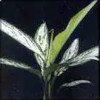 Aglaonema commutatum “Silver Queen”
Aglaonema commutatum “Silver Queen”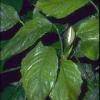 Aglaonema simplex
Aglaonema simplex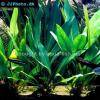 Anubias afzelii
Anubias afzelii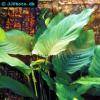 Anubias barteri
Anubias barteri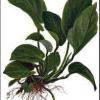 Anubias barteri “Caladiifolia” ‘1705’
Anubias barteri “Caladiifolia” ‘1705’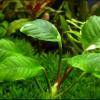 Anubias barteri “Coffeefolia”
Anubias barteri “Coffeefolia”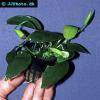 Anubias barteri “Nana”
Anubias barteri “Nana”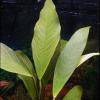 Anubias barteri v. angustifolia
Anubias barteri v. angustifolia Anubias gracilis
Anubias gracilis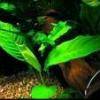 Anubias heterophylla
Anubias heterophylla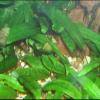 Cryptocoryne affinis
Cryptocoryne affinis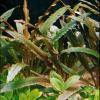 Cryptocoryne albida
Cryptocoryne albida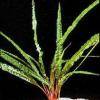 Cryptocoryne balansae
Cryptocoryne balansae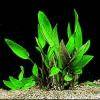 Cryptocoryne becketti
Cryptocoryne becketti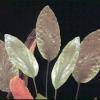 Cryptocoryne blassi
Cryptocoryne blassi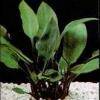 Cryptocoryne ciliata
Cryptocoryne ciliata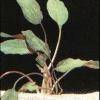 Cryptocoryne cordata
Cryptocoryne cordata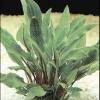 Cryptocoryne lutea
Cryptocoryne lutea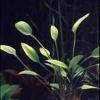 Cryptocoryne nevillii
Cryptocoryne nevillii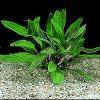 Cryptocoryne petchii
Cryptocoryne petchii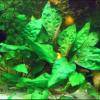 Cryptocoryne pontederiifolia
Cryptocoryne pontederiifolia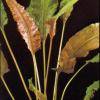 Cryptocoryne wendtii
Cryptocoryne wendtii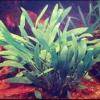 Cryptocoryne willisii
Cryptocoryne willisii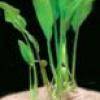 Lagenandra ovata
Lagenandra ovata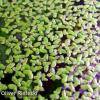 Lemna minor
Lemna minor Pistia stratiotes
Pistia stratiotes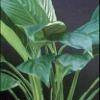 Spathiphyllum petite
Spathiphyllum petite